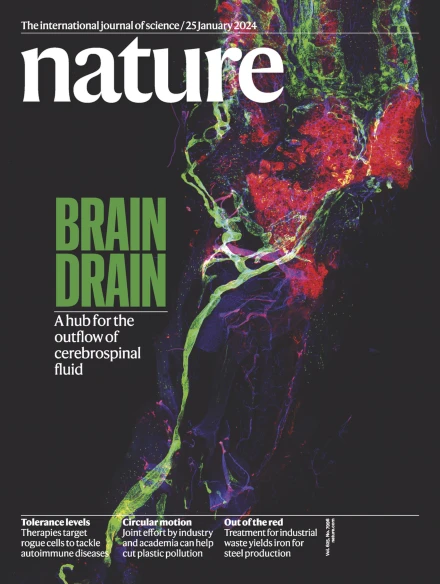M67星团恒星的声波模式显示了对流包层的加深
IF 50.5
1区 综合性期刊
Q1 MULTIDISCIPLINARY SCIENCES
引用次数: 0
摘要
恒星的声波振荡对恒星内部很敏感。谐波模式(大间隔)之间的频率差异探测了恒星密度2,而低阶模式(小间隔)之间的频率差异探测了主序类太阳恒星产生能量核心的声速梯度3,从而探测了它们的年龄。在恒星演化的后期阶段,其特征是内核的惰性,小的分离被认为会失去探测内部深处的大部分能力,而与大的分离成正比。在这里,我们提供的证据表明,当恒星从亚巨星阶段演变成红巨星时,一个快速演变的对流带。通过测量疏散星团M67中的27颗恒星的声振荡,我们观察到由于对流包膜底部的影响,小距离和大距离之间的比例偏差。在亚巨星和红巨星的演化过程中,当对流包层深入恒星内部时,这些偏差就会变得明显,最终进入一个超深的状态,导致红巨星分支的亮度凸起。星团恒星的紧密序列,在年龄和基本性质上没有很大的差距,对于揭示观测到的小分离与发生在对流包层底部的化学不连续之间的联系是必不可少的。我们用这个序列来表明,结合大、小的分离可以改善对主序后恒星质量和年龄的估计。本文章由计算机程序翻译,如有差异,请以英文原文为准。


Acoustic modes in M67 cluster stars trace deepening convective envelopes
Acoustic oscillations in stars are sensitive to stellar interiors1. Frequency differences between overtone modes—large separations—probe stellar density2, whereas differences between low-degree modes—small separations—probe the sound-speed gradient in the energy-generating core of main-sequence Sun-like stars3, and hence their ages. At later phases of stellar evolution, characterized by inert cores, small separations are believed to lose much of their power to probe deep interiors and become proportional to large separations4,5. Here we present evidence of a rapidly evolving convective zone as stars evolve from the subgiant phase into red giants. By measuring acoustic oscillations in 27 stars from the open cluster M67, we observe deviations of proportionality between small and large separations, which are caused by the influence of the bottom of the convective envelope. These deviations become apparent as the convective envelope penetrates deep into the star during subgiant and red giant evolutions, eventually entering an ultradeep regime that leads to the red-giant-branch luminosity bump. The tight sequence of cluster stars, free of large spreads in ages and fundamental properties, is essential for revealing the connection between the observed small separations and the chemical discontinuities occurring at the bottom of the convective envelope. We use this sequence to show that combining large and small separations can improve estimations of the masses and ages of field stars well after the main sequence. Measuring acoustic oscillations in 27 stars within the M67 cluster presents evidence of a rapidly evolving convective zone as stars evolve from subgiants to red giants.
求助全文
通过发布文献求助,成功后即可免费获取论文全文。
去求助
来源期刊

Nature
综合性期刊-综合性期刊
CiteScore
90.00
自引率
1.20%
发文量
3652
审稿时长
3 months
期刊介绍:
Nature is a prestigious international journal that publishes peer-reviewed research in various scientific and technological fields. The selection of articles is based on criteria such as originality, importance, interdisciplinary relevance, timeliness, accessibility, elegance, and surprising conclusions. In addition to showcasing significant scientific advances, Nature delivers rapid, authoritative, insightful news, and interpretation of current and upcoming trends impacting science, scientists, and the broader public. The journal serves a dual purpose: firstly, to promptly share noteworthy scientific advances and foster discussions among scientists, and secondly, to ensure the swift dissemination of scientific results globally, emphasizing their significance for knowledge, culture, and daily life.
 求助内容:
求助内容: 应助结果提醒方式:
应助结果提醒方式:


